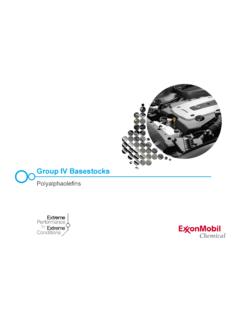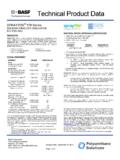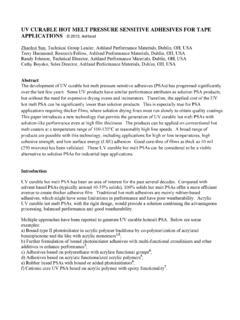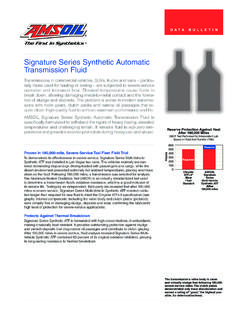Transcription of Safety Data Sheet Fluid: 5000 cP - Benelux Scientific
1 brookfield ENGINEERING LABORATORIES, COMMERCE BOULEVARDMIDDLEBORO, MASSACHUSETTS 02346, USAS afety data SheetFluid: 5000 cPSDS silicone 5000 Date: 18 October 20131. IDENTIFICATIONB rookfield Engineering Laboratories11 Commerce BoulevardMiddleboro, MA 02346 Emergency Telephone (Chem-Tel Inc.):Domestic (US/PR/Canada/US Virgin Is); 800 255 3924 International (outside N. America); +(1) 813 248 0585 Generic Description:SiliconePhysical Form:LiquidColor:ColorlessOdor:Character istic OdorNFPA* Profile:Health 0 Flammability 1 Instability/Reactivity 0* NFPA = National Fire Protection Association2. HAZARD(S) IDENTIFICATIONPOTENTIAL HEALTH EFFECTSA cute Effects Eye: Direct contact may cause temporary redness and discomfort. Skin: No significant irritation expected from a single short-term exposure.
2 Inhalation: No significant effects expected from a single short-term exposure. Oral: Low ingestion hazard in normal Exposure Effects Skin: No known applicable information. Inhalation: No known applicable information. Oral: No known applicable and Symptoms of OverexposureNo known applicable Conditions Aggravated by ExposureNo known applicable above listed potential effects of overexposure are based on actual data , results of studies performedupon similar compositions, component data and/or expert review of theproduct. Please refer to Section 11for the detailed toxicology COMPOSITION/INFORMATION ON INGREDIENTSNone present. This is not a hazardous material as defined in the OSHA Hazard Communication ENGINEERING LABORATORIES, COMMERCE BOULEVARDMIDDLEBORO, MASSACHUSETTS 02346, USAS afety data SheetFluid: 5000 cPSDS silicone 5000 Date: 18 October 20134.
3 FIRST AID MEASURESEye:If irritation occurs, flush eye(s) with lukewarm gently flowing water for 5 :No health effects expected. If irritation does occur flush withlukewarm, gentlyflowing waterfor 5 minutes. If irritation persists, obtain medical :If symptoms are experienced remove source of contaminationor move victim tofresh air. Ifirritation persists, obtain medical :If irritation or discomfort occur, obtain medical to Physician:Treat according to person's condition and specifics of FIRE FIGHTING MEASURESF lash Point Range:>214 F / > C (Closed Cup)Auto-ignition Temperature:Not Limits in Air:Not Media:On large fires use dry chemical, foam or water spray. On small fires use carbondioxide (CO2), dry chemical or water spray. Water can be used to cool fireexposed Fighting Measures:Self-contained breathing apparatus and protectiveclothing should be worn infighting large fires involving chemicals.
4 Determine the need to evacuate orisolate the area according to your local emergency plan. Use water spray tokeep fire exposed containers Fire ACCIDENTAL RELEASE MEASURESC ontainment/Clean up:Determine whether to evacuate or isolate the area according to your local emergency plan. Observe allpersonal protection equipment recommendations described in Sections 5 and 8. For large spills, providediking or other appropriate containment to keep material from spreading. If diked material can be pumped,store recovered material in appropriate container. Clean up remaining materials from spill with suitableabsorbant. Clean area as appropriate since somesilicone materials, even in small quantities, may present aslip hazard. Final cleaning may require use of steam, solvents or detergents.
5 Dispose of saturatedabsorbant or cleaning materials appropriately, since spontaneous heating may occur. Local, stateandfederal laws and regulations may apply to releases and disposal of this material, as well as those materialsand items employed in the cleanup of releases. You will need to determine which federal, state and locallaws and regulations are applicable. Sections 13 and 15 of thisSDSprovide information regarding certainfederal and state : See Section 8 for Personal Protective Equipment for ENGINEERING LABORATORIES, COMMERCE BOULEVARDMIDDLEBORO, MASSACHUSETTS 02346, USAS afety data SheetFluid: 5000 cPSDS silicone 5000 Date: 18 October 20137. HANDLING AND STORAGEUse with adequate ventilation. Avoid eye reasonable care and store away from oxidizing EXPOSURE CONTROLS / PERSONAL PROTECTIONC omponent Exposure Limits:There are no components with workplace exposure Controls: Local Ventilation: None should be needed.
6 General Ventilation: Protective Equipment for Routine Handling: Eyes: Use proper protection- Safety glasses as a minimum. Skin: Washing at mealtime and end of shift is adequate. Suitable Gloves:Handle in accordance with good industrialhygiene and Safety practices. Inhalation: No respiratory protection should be needed. Suitable Respirator: None should be Protective Equipment for Spills: Eyes: Use proper protection- Safety glasses as a minimum. Skin: Washing at mealtime and end of shift is adequate. Inhalation/Suitable Respirator: No respiratory protection should be needed. Precautionary Measures: Avoid eye contact. Use reasonable :When heated to temperatures above 150 degrees C in the presence of air,product can formformaldehyde vapors. Formaldehyde is a potential cancer hazard, a known skin and respiratorysensitizer, and an irritant to the eyes, nose, throat, skin, and digestive system.
7 Safe handlingconditions may be maintained by keeping vapor concentrations within the OSHA PermissibleExposure Limit for : These precautions are for room temperature handling. Use at elevated temperature or aerosol/sprayapplications may require added precautions. For further information regarding aerosol inhalation toxicity,please refer to the guidance document regarding the use of silicone-based materials in aerosol applicationsthat has been developed by the silicone industry (www. ) brookfield ENGINEERING LABORATORIES, COMMERCE BOULEVARDMIDDLEBORO, MASSACHUSETTS 02346, USAS afety data SheetFluid: 5000 cPSDS silicone 5000 Date: 18 October 20139. PHYSICAL AND CHEMICAL PROPERTIESP hysicalForm:LiquidColor:ColorlessOdor:Ch aracteristic OdorSpecific Gravity Range @ 25 C.
8 :5000cPFreezing/Melting Point:Not Point:>65 CVapor Pressure @ 25 C:Not Density:Not in Water:Not :Not Content:Not Point Range:>214 F / > C (Closed Cup)Autoignition Temperature:Not Limits in Air:Not : The above information is not intended for use in preparing product STABILITY AND REACTIVITYC hemical Polymerization:Hazardous polymerization will not to to Avoid:Oxidizing material can cause a Decomposition ProductsThermal breakdown of this product during fire or very high heat conditions may evolve the followingdecomposition products: Carbon oxides and traces of incompletely burned carbon compounds. Silicondioxide. TOXICOLOGICAL INFORMATIONA cute Toxicology data for ProductSpeciesTest ResultsOral LD50:Rat>15,400 mg/kgDermal LD50:Rabbit> 2,000 mg/kgComponent Toxicology InformationNo known applicable Hazard Information on Components:No known applicable ENGINEERING LABORATORIES, COMMERCE BOULEVARDMIDDLEBORO, MASSACHUSETTS 02346, USAS afety data SheetFluid: 5000 cPSDS silicone 5000 Date: 18 October 201312.
9 ECOLOGICAL INFORMATIONE nvironmental Fate and Distribution: Air: This product is a high molecular weight liquid polymer which has a very low vapor pressure (<1 mmHg). As a result it is unlikely to become an atmospheric contaminant unless generated as an aerosol. Water: This product has a very low water solubility (< 100 ppb). As it has a specific gravity of < 1, ifdischarged to water, it will initially form a surfacefilm. As the product is non-volatile and has a highbinding affinity for particulate matter, it will adsorb to particulates and sediment out. Soil: If discharged to surface water, this product will bind to sediment. If discharged in effluent to a wastewater treatment plant, the product is removed from the aqueous phase by binding to sewage sludge.
10 Ifthe sewage sludge is subsequently spread on soil, the silicone product is expected to degrade. Degradation: This product, polydimethylsiloxane, degrades in soil abiotically to form smaller in turn are either biodegraded in soil or volatilized into the air where they are broken down in thepresence of sunlight. Under appropriate conditions, the ultimate degradation products are inorganicsilica, carbon dioxide and water vapor. Due to the very low water solubility of this product, standardOECD protocols for ready and inherent biodegradability are not suitable for measuring thebiodegradability of this product. The product is removed >80% duringthe sewage treatment Effects: Toxicity to Water Organisms: Based on analogy to similar materials this product is expected to exhibitlow toxicity to aquatic organisms.




